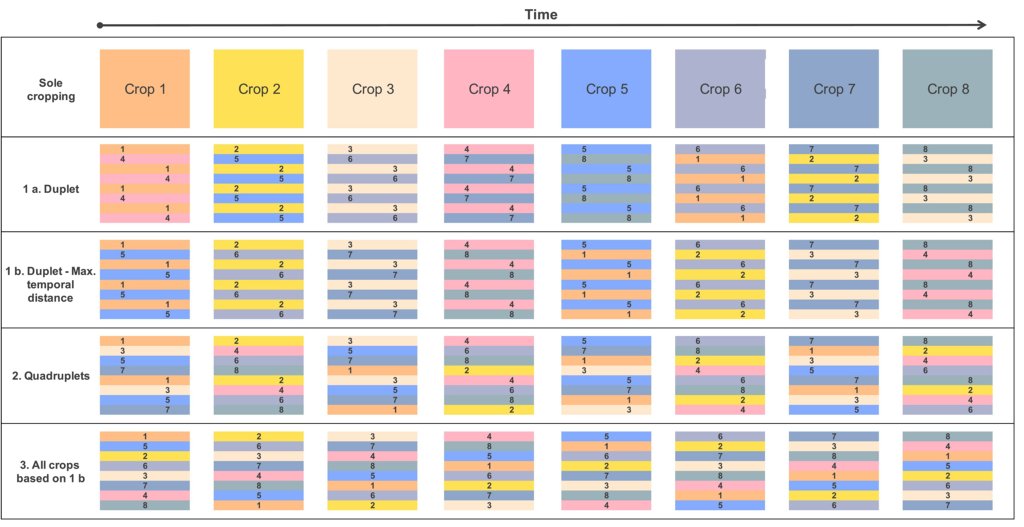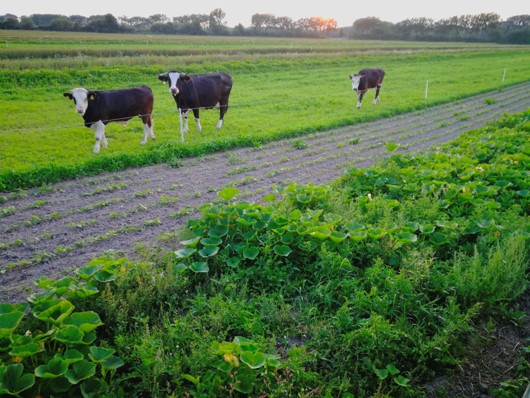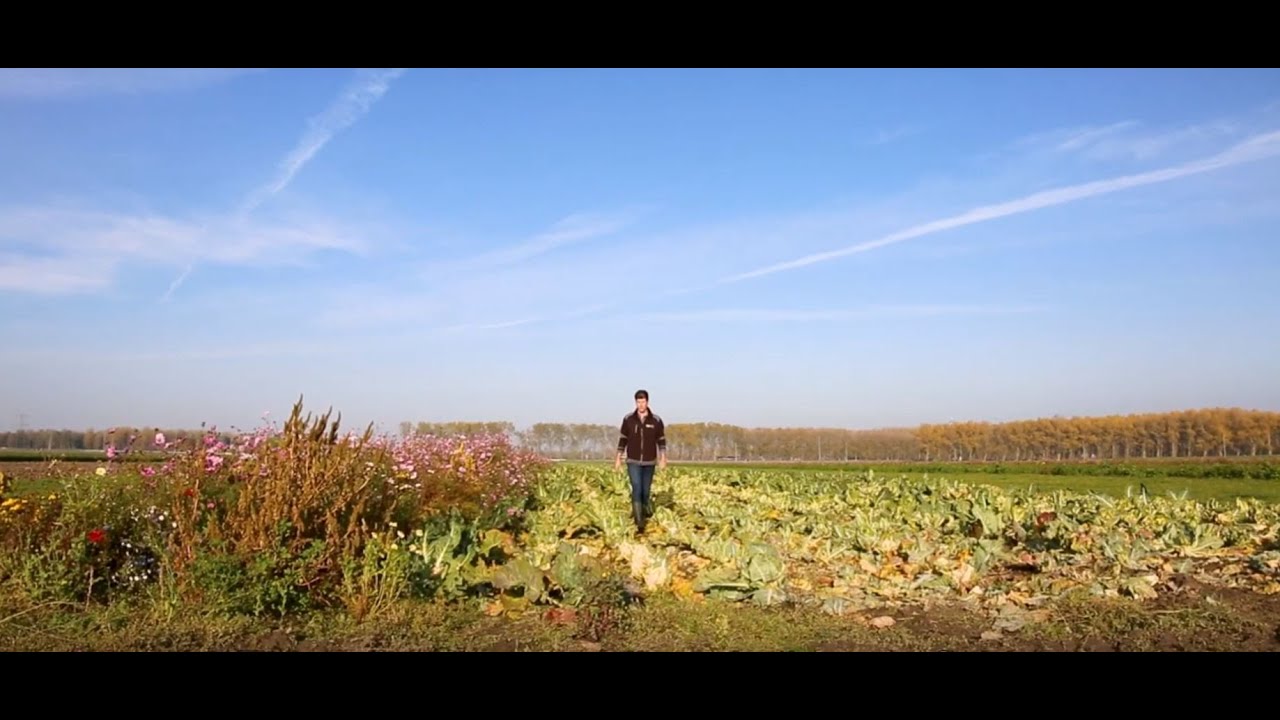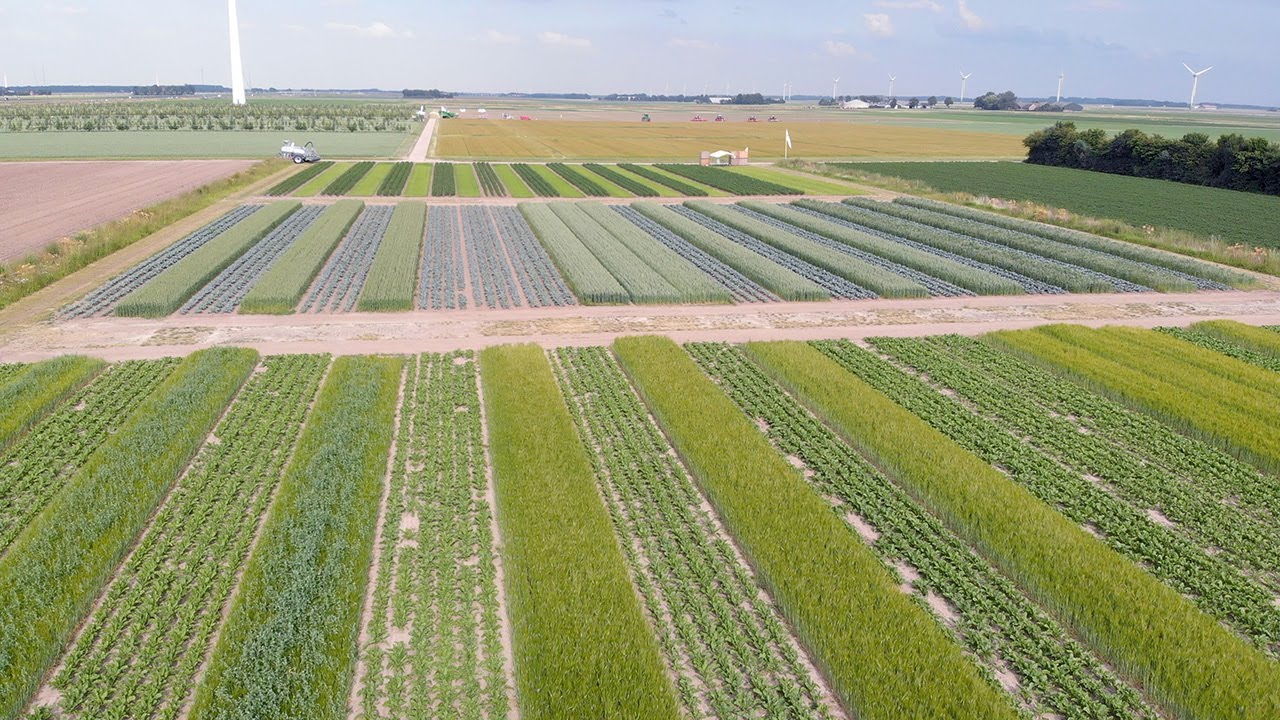Farmers usually grow one crop per field per year to simplify management. However, this monoculture creates an unattractive, less diverse environment that allows pests and diseases to spread rapidly. An alternative is to diversify the field by growing several crops in strips. Strip cropping provides a more diverse and continuous habitat which encourages biodiversity and biological control. Moreover, it facilitates positive crop interactions which can increase productivity. Which crops to grow after each other, and which crops to grow next to each other are the essential questions to be answered when designing strip cropping systems. The challenge is to combine the temporal and spatial aspects in one strip cropping design and evaluate their performance. This is a knowledge-intensive process.
We created a design framework that systematically explores and evaluates different strip cropping plans. We use tools to accomplish this, as it impossible to manually explore all possible options. We first use ROTAT to generate crop rotations. Then we use the novel RotaStrip tool to ‘expand’ the rotation to crop arrangements in space.
Rules and objectives are used as a basis for developing and evaluating strip cropping plans. For example, the plans have to be agronomically sound, delivering comparable or better yields than monoculture systems. Beyond productivity, other objectives to consider include improving soil health and biodiversity. Moreover, the plans have to be implementable with the farmer’s machines.
In the design framework, we learn about the farm context, objectives, challenges, and preferences through farmer interviews. Based on this information, a number of strip cropping plans are generated and evaluated, using the tools. The farmer thereafter selects their preferred plan.

Our goal is to support farmers in their decision-making process to design a strip cropping system that satisfies their set of objectives. The user-friendliness of the tools is being improved so that they can be directly used by the farmers themselves. This will facilitate stakeholder co-learning - farmers, advisors and researchers- and speed up the development of strip cropping systems. Looking forward, the knowledge gained and way of thinking used in the framework contributes to developing more diversified cropping systems. This enables us to move away from a human-centred system which focuses solely on productivity to a system which integrates the interests of living members of an agroecosystem: the soil, the plants, the animals, and the farmer.




